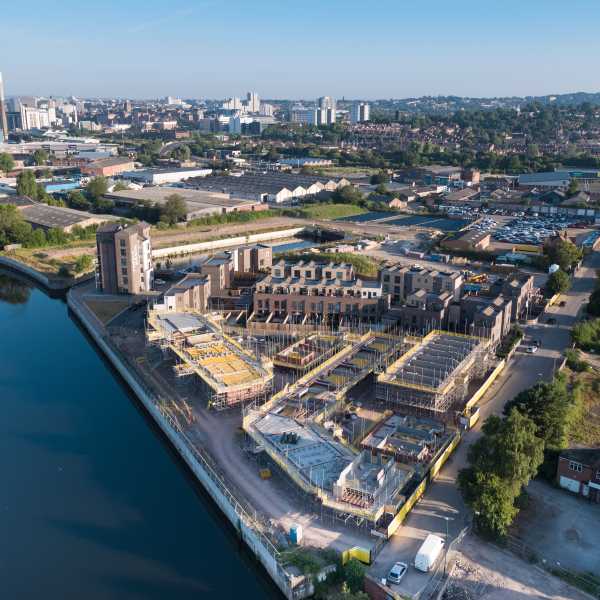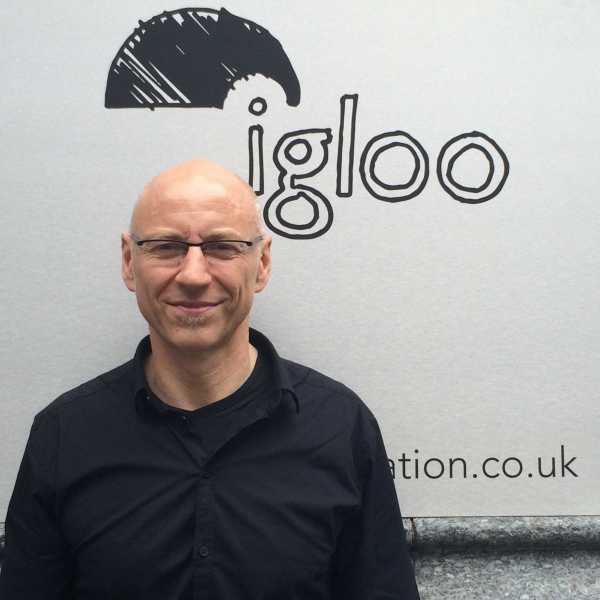Leading Sustainable Development: igloo and Blueprint’s Commitment to Carbon Reduction
A Q&A session with Peter Conboy, Development Director for igloo and Blueprint
As the world grapples with the urgent need to reduce carbon emissions, the UK Green Building Council (UKGBC) continues to play a pivotal role in shaping a sustainable future for the built environment. Recently, the UKGBC released an insightful report on embodied carbon emissions, with a significant contribution from our own Peter Conboy, Development Director for igloo and Blueprint. As an industry expert and a non-executive member of the UKGBC’s Research Task Groups, Peter provided the foreword for this report, emphasising the need for a more rigorous carbon reduction strategy within the industry.
Here, we’ll delve a little deeper into the specifics of the new guidance on embodied carbon and Scope 3 Measurement and Reporting – exploring how these initiatives are set to transform the industry. Peter, with his profound expertise in sustainable development, shares his insights on the report and its implications for the future of building and sustainability.
Q: Peter, can you tell us more about how the guidance on embodied carbon came about?
“The UK has made significant strides in reducing its territorial carbon emissions, largely through greening the power grid. This progress has also influenced the built environment sector, where we’re seeing a reduction in operational carbon emissions. But as we move forward, the focus is increasingly shifting towards the embodied carbon emissions found in the supply chains of construction materials.
“The new UKGBC guidance was developed to address this growing concern, providing a structured approach for measuring and reporting embodied carbon through established tools like the RICS Whole Life Carbon Assessment and the Greenhouse Gas Protocol Scope 3.”
Q: How are embodied carbon assessments currently conducted, and what approach does igloo take?
“Traditionally, embodied carbon emissions haven’t been reported as clearly as we would like. At igloo and Blueprint, we utilise whole life carbon analysis to measure and report on these emissions.
“This is crucial for targeting reductions, especially by collaborating with producers of low-carbon materials. For instance, our partnership with Indinature, which manufactures carbon-negative natural fibre insulation, is a prime example of how we can significantly cut down embodied carbon by choosing the right materials.”
Q: What benefits will the new UKGBC guidance bring to organisations?
“The guidance aims to enhance the robust use of the RICS Whole Life Carbon Assessment Standard and align it with Scope 3 emissions reporting. By integrating these standards into everyday practice, organisations can drive down both project-specific and overall operational emissions. This not only aids in achieving carbon reduction goals but also prepares organisations for potential future regulations on embodied carbon reporting.”
Q: What further impacts do you hope this guidance will achieve?
“Beyond immediate emission reductions, we hope this guidance prompts more substantial regulatory action on embodied carbon and Scope 3 emissions. It’s about setting a new standard for transparency and accountability in the industry, ensuring that every organisation contributes meaningfully to our collective environmental targets.”
Q: How significant is the role of innovation in achieving these goals?
“Innovation is key. We’re constantly exploring new materials and methodologies that can help reduce the carbon footprint of building projects. For example, advanced modular construction techniques not only speed up the building process but also reduce waste and emissions associated with traditional construction methods. Such innovations are integral to not just meeting, but exceeding our sustainability goals.”
Q: Looking forward, what challenges do you foresee in implementing these new guidelines?
“One of the main challenges will be ensuring widespread adoption and compliance across the industry. While many organisations are committed to sustainability, the detailed tracking and reporting required can be daunting. Additionally, the global nature of supply chains means that achieving consistency in data quality and reporting standards can be challenging. However, with collaborative efforts and a commitment to education and training, these hurdles can be overcome.”
Setting the standard
It’s clear that the path towards a sustainable future in the built environment is being paved with innovative and rigorous strategies for carbon reduction. igloo and Blueprint are at the forefront of this approach, demonstrating a steadfast commitment to sustainability and environmental responsibility.
This new guidance from UKGBC represents a significant step forward in our journey to a greener planet, and with industry leaders like Peter guiding the way, the built environment is set to be a major player in the global effort to combat climate change.
This ongoing commitment to sustainability not only enhances the industry’s environmental footprint but also sets a global standard – one that we hope others will be inspired to follow.
Click here to download your copy of Embodied Carbon: Scope 3 Measurement and Reporting.

